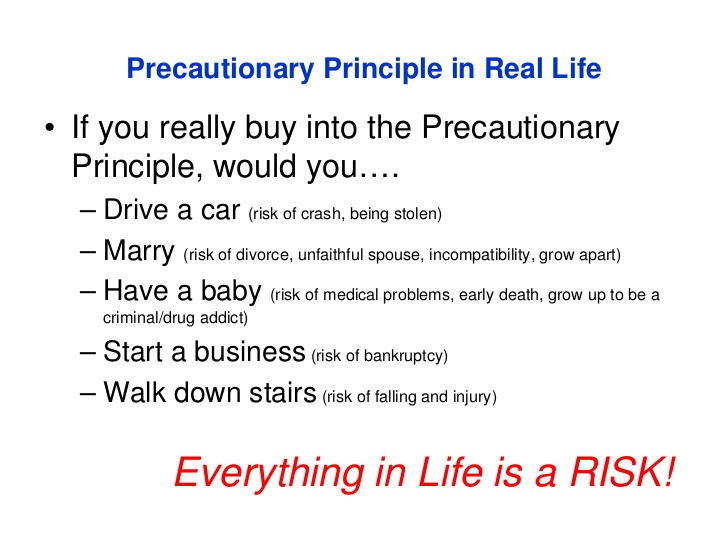Military History Visualized
Published 5 Feb 2019Why was Rommel’s 7th Panzer Division called Gespensterdivsion – the “Ghost Division”? From all we know it earned this name during the Battle of France.
(more…)
July 29, 2022
Why Ghost Division? What did Rommel do?
May 1, 2022
The Victorian-era “guarantee fund” model for risky enterprises
In the latest Age of Inventions newsletter, Anton Howes wonders why we don’t have a modern equivalent to the funding mechanism that helped create the Great Exhibition of 1851 and other events that provided benefits to the public without government backing:

The Crystal Palace from the northeast during the Great Exhibition of 1851.
Image from the 1852 book Dickinsons’ comprehensive pictures of the Great Exhibition of 1851 via Wikimedia Commons.
As I’ve mentioned before, exhibitions of industry were not just celebrations of technological progress, but could become engines for progress as well. For the inventors, artists, and engineers who exhibited, the events were a direct inducement to improvement. And for the public who visited, the events exposed them to what was possible, encouraging them to raise their demands as both consumers and citizens, ideally inspiring them to become future innovators too.
But how was it all paid for? Unlike its national-level precursors in France, the Great Exhibition was not a state-run event. Even more remarkably, its organisers also failed to raise anywhere near enough private subscriptions to cover their costs. Instead, they used something that called a “guarantee fund”.
Instead of asking for donations from supporters up-front, the organisers asked them to commit to covering the exhibitions potential losses up to certain amounts — to be paid only if the money was required. Based on the security provided by this crowdsourced guarantee fund, the organisers then raised an ordinary bank loan in order to get the cash they needed to actually hold the event. Crucially, the guarantors didn’t actually have to spend anything unless the event made a loss, and if the event broke even or even made a surplus thanks to ticket fees, then they would never spend a penny at all. (Luckily for them, that’s exactly what happened in 1851, and for many later exhibitions too.)
What’s interesting to me about the guarantee fund is that I can’t quite think of anything quite like it today. There are perhaps more individualised versions of it, like when a neighbour or friend acts as a guarantor for a mortgage. And governments sometimes provide guarantees for certain sectors or industries too. There have also been a few profit-making versions of it in certain industries, where the guarantors potentially get some share of the upside too (“Names” at the Lloyds of London insurance and reinsurance market sounds similar, though even these are disappearing). But I’ve not seen anything like what the Victorians did, essentially using a guarantee fund to leverage philanthropy.
This is surprising to me. It seems like it has a lot of major advantages, especially for those who might want to replicate the exhibitions of industry today, or indeed for any kind of capital-intensive philanthropic endeavour that could eventually be expected in some measure to pay for itself. (I can’t help but think it would be useful in efforts to speed up the de-carbonisation of the economy, for example — a potential application that I’ve been exploring in my conversations with the people at Carbon Upcycling.)
Consider that with a guarantee fund anyone able to afford the risk could considerably increase the philanthropic value of their assets. Say that you could afford to donate £100 right away, but could donate three times that amount at a pinch (e.g. by having to liquidate some funds in shares). You could thus guarantee £100 each to three different causes, potentially without ever actually having to donate it, and knowing that in the worst case scenario you would never have to spend more than the £300 you can afford.
After all, those signing up to the guarantee fund essentially chose what their maximum liability would be if the event were to make a loss. If they were confident in the event’s success, then they probably believed that they would not have to pay anything at all. And if not, they had at least named the maximum donation they might eventually be asked to give.
April 20, 2022
QotD: Innovation and risk-taking are anathema to Fortune 500 companies
I learned the danger of excessive caution long ago, when I consulted to huge Fortune 500 companies. The single biggest problem I encountered — shared by virtually every large company I analyzed — was investing too much of their time and money into defending old ways of doing business, rather than building new ones. We even had a proprietary tool for quantifying this misallocation of resources — which spelled out the mistakes in precise dollars and cents.
But senior management hated hearing this, and always insisted that defending the old business units was their safest bet. After I encountered this embedded mindset again and again and saw its consequences, I reached the painful conclusion that the safest path is often the most dangerous. If you pursue a strategy — whether in business or your personal life — that avoids all risk, you might flourish in the short run, but you flounder over the long term. Sad to say, that’s what now happening in the music business. Keep your head in the sand long enough, and you suffocate.
The leading companies in music had many chances to reinvent themselves over the last quarter century, taking bold action that might have transformed themselves and the entire culture. But they didn’t want to take any risks. They could have invested in new technologies — but didn’t, instead allowing Silicon Valley companies to swallow up most of the profits from music in the 21st century. They could have signed and nurtured new talent — but didn’t, preferring to invest in 50-year-old songs. They could have embraced exciting new sounds — but didn’t because the algorithms and dominant formulas reward rehashes of the old sounds.
Ted Gioia, “Is Old Music Killing New Music?”, The Honest Broker, 2022-01-19.
January 23, 2022
The oddity of the bookselling business
Unlike so many other retail operations, book stores have a different sales cycle because they can generally return unsold books (in good condition) to the publisher for a full refund. This means that 30% or more of the books on the shelf at Christmas will be shipped back to the publisher early in the new year, only to appear again on the discount shelves a year or two later for a fraction of the original retail price (and often in rather worse shape for all the additional handling). In the latest SHuSH newsletter, Kennethy Whyte calls this the worst problem in book publishing:

“Indigo Books and Music” by Open Grid Scheduler / Grid Engine is licensed under CC0 1.0
Book publishing doesn’t work like most other retail businesses. If I were in the ugly sweater business, I’d sell 500 ugly sweaters to Saks at $200-a-piece. Saks pays me 500x$200=$100,000, marks the ugly sweaters up to $500, and lays them out on tidy glass shelves under track lighting. Whatever is left after the Christmas season is marked down to half price on crowded sales racks. If Saks still has some ugly sweaters in January, it will ship them to the outlet store where they’re offered at still greater discounts.
What happens to them if they don’t sell at the outlet doesn’t interest me because I’ve got my $100,000. If Saks ordered far too many ugly sweaters, that’s Saks’ problem.
In the book world, I sell 1,000 copies of a book to a retail chain like Barnes & Indigo for $15-a-piece, half the retail price. Barnes & Indigo pays me 1,000x$15=$15,000 and maybe puts some of the books on a front table, or maybe buries them on a bottom shelf in the darkest corner of the store. I might sell a two hundred, four hundred, or six hundred copies.
Let’s be generous and say 600 sell at Barnes & Indigo through the autumn and over the holidays. Come January, the store doesn’t put the remaining stock on sale: it packs up the unsold 400 and ships them back to me for a full refund. The 400 returns, or at least those of them that aren’t crumpled or coffee-stained, go back into the warehouse, which charges me fees to process the returns and more fees to store them. Sometime later, I get a notice of the returns and regret that extra glass of wine I ordered at dinner the night I thought I sold Barnes & Indigo $15,000 worth of books when, in fact, I only sold $9,000 worth of books, perhaps leaving me under-water on that particular title. I also regret boasting of the $15,000 sale to the author, who probably did some royalty math in his head and thought he was getting 40% more than he’ll actually receive.
Returns at publishing houses run somewhere between 25% and 30% annually, across all titles. That’s despite Amazon with its ruthlessly efficient algorithms seldom buying many more copies than it needs, and despite ebooks and audiobooks (which amount to a quarter of sales for many publishers) having almost zero returns.
Millions of books are returned to publishers at this time of year. Sales are slower in January and February, so bookstores hurriedly return all their remaining holiday-season stock and whatever else hasn’t moved to keep themselves in cash. Some of the returns go back into storage. Eventually, most are remaindered, or pulped, or buried. It’s a colossal waste of paper and ink, a headache in terms of shipping/handling/accounting, and dispiriting as heck. You might think you had a great year, hit all your sales targets, exceeded them, even, and then in about the third week of January begins the drip drip drip of returns, and it continues steadily through March. That’s if you’re lucky and it’s drips, not waves. And while the returns are concentrated in the first quarter, your books are returnable year-round, so even a pleasant summer afternoon can be ruined by the unexpected arrival of a pallet of unwanted stock.
December 17, 2021
Scott Alexander on the risk of ancient plagues returning
The other day, Scott Alexander responded to a hair-on-fire New York Magazine piece of hysteria-mongering about climate change warming up arctic zones that may still harbour ancient plagues that can return:
I’m a little nervous talking about this, because I am not a microbiologist. But I haven’t seen the proper experts address this properly, so I’ll try, and if I’m wrong you guys can shout me down.
(Also, the real microbiologists are apparently “self-injecting [3.5 million year old bacteria] just out of curiosity” and we should probably stay away from them for now)
I think we probably don’t have to worry very much about ancient diseases from millions of years ago.
Animal diseases can’t trivially become contagious among humans. Sometimes an animal disease jumps from beast to man, like COVID or HIV, but these are rare and epochal events. Usually they happen when the disease is very common in some population of animals that lives very close to humans for a long time. It’s not “one guy digs up a reindeer and then boom”.
If a plague is so ancient that it’s from before humans evolved, it’s probably not that dangerous. In theory, it could be dangerous for whatever animal it originally evolved for — a rabbit plague infecting rabbits, or an elephant plague infecting elephants. And then maybe after many rabbits are infected, some human might eat an infected rabbit and get unlucky, and the plague might mutate to affect humans. But I don’t think this is any more likely than any of the zillion plagues that already infect rabbits jumping to humans, and nobody is worrying about those.
The story about anthrax is a distraction. The fact that someone got anthrax from a corpse frozen in permafrost is irrelevant; there is anthrax now, and you could get it from a perfectly fresh corpse or living animal if you wanted. It’s adapted to animals and it can’t spread from person to person. Just because you got an irrelevant-to-humans modern animal disease when you dug up a modern animal, doesn’t mean you’re going to get a dangerous-to-humans disease from an ancient animals.
But I’m more concerned about recent human plagues coming back.
Not bubonic plague; that one is another distraction. The reason we don’t get more Black Deaths isn’t because yersinia pestis died off or mellowed out. It’s because we have good sanitation and pest control.
But the 1918 Spanish flu has, as far as I know, legitimately died out. Lots of people like saying that in a sense it’s still with us. This NEJM paper (with a celebrity author!) points out that it’s the ancestor of all existing flu strains. But most of these flu strains are less infectious than it was. This didn’t make sense to me the first, second, or third time I asked about it: why would a flu evolve into an inferior flu? Sure, it might evolve into a less deadly flu because it’s perfectly happy being more infectious but less deadly. But I think the Spanish flu was also especially infectious; so why would it evolve away from that?
May 29, 2020
April 15, 2020
The Industrial Revolution and the Society for the Encouragement of Arts, Manufactures and Commerce
In the latest from Anton Howes’ Age of Invention newsletter, we are introduced to the Society for the Encouragement of Arts, Manufactures and Commerce:

The London Sweep (from a Daguerreotype by BEARD).
Image from London labour and the London poor : a cyclopaedia of the condition and earnings of those that will work, those that cannot work, and those that will not work, 1851, via the Wellcome Collection.
When we think of the British Industrial Revolution, the image that springs to mind tends to be of soot-belching factories and foundries, of child labour and squalid cities. The inventors who spring to mind tend to be James Watt and his steam engines, or Richard Arkwright and his cotton-spinning machines. But what people tend to forget is that the Industrial Revolution was unleashed by a much broader tide of accelerating innovation — as I never tire of repeating, it touched everything from agriculture to watchmaking, and everything inbetween. Just as some inventors pioneered the use of factories, other inventors sought solutions to industrialisation’s social ills.
Last time, I mentioned the Society for the Encouragement of Arts, Manufactures and Commerce, set up in 1754 in a London coffee house (the Society of Arts for short). What’s so fascinating about the organisation — which still exists today, now called “Royal” — is that it was closely involved with many of the more socially-oriented innovations of the period. By this, I mean the kinds of inventions that were rarely immediately profitable, but which aimed to save lives, to alleviate suffering, or to remedy some other social ill. The Society advertised premiums — cash prizes or honorary medals — for solutions to the problems that its members identified. And it offered similar rewards, which they called bounties, for unsolicited inventions.
It awarded a bounty of fifty guineas and a gold medal to Henry Greathead, for example, one of the claimants for the invention of the lifeboat. It gave another fifty guineas to a sergeant of the Royal Artillery, John Bell, for a method of firing a rope and grapple by mortar from a ship to the shore, to save people on board from shipwreck during storms. (Some years later, it even gave a gold medal to another inventor for a device that did the opposite, firing from shore to ship.) The Society awarded a medal to a Sheffield schoolmaster, John Hessey Abraham, for a magnetic apparatus that would prevent metal dust getting into the eyes and lungs of workers employed in grinding the points of needles. And in 1767 it awarded a bounty to a clockmaker, Christopher Pinchbeck, for a safer crane — cranes at the time were like gigantic hamster wheels, but for humans. When lines snapped, the results could be fatal, so Pinchbeck added a pneumatic braking mechanism.
The list goes on — in all, over the course of about a century, the Society of Arts awarded over two thousand premiums and bounties for inventions. But there is one that really stands out: a premium for the invention of a mechanical means of cleaning chimneys. With such an invention, the Society hoped to abolish the employment of children, sometimes as young as 4, who were forced to climb up inside chimneys in order to clean them. These children were sometimes abducted by the master chimney sweeps, and frequently perished in horrific accidents or of soot-induced cancers. Strikingly, the use of climbing boys was thought to be unique to Britain — the “peculiar disgrace of England” as the campaigners put it (though I don’t think this was quite true). The Society’s idea was that if a technological replacement could be found, then the case for outright abolition could be made — they wanted to create a machine to take the children’s jobs.
The Society of Arts played its role with the offer of a premium, but it acted alongside another campaign run by a few of its members, who ran the snappily titled “Society for Superseding the Necessity of Climbing Boys, by Encouraging a New Method of Sweeping Chimnies, and for Improving the Condition of Children and Others Employed by Chimney Sweepers”, founded in 1803 at the London Coffee-House on Ludgate Hill. Let’s call it the SSNCB for short. There had been earlier campaigns to abolish the use of climbing boys, one of the most prominent being run by Jonas Hanway (a prominent philanthropist, also a member of the Society of Arts, whose various claims to fame include being the first man in London to sport an umbrella). But the 1803 campaign was to prove the most successful, drawing on wider political support. The SSNCB’s key members included William Wilberforce, who later became famous for his zeal in abolishing the slave trade.
April 6, 2020
The Precautionary Principle – “If it saves only one life…”
A guest post at Catallaxy Files on the madness of taking the Precautionary Principle as your guide:

Slide from a presentation by Patti Gettinger, 2011-07-11.
Original slideshow at https://fr.slideshare.net/regsgridlock/the-precautionary-principle-8656034
In the unprecedented trampling of rights characterised by the response to the global pandemic of COVID-19, the common justification is that it will save lives, as though no measure is too great to save even one life.
This has echoes of the Precautionary Principle, which has pushed aside ubiquitous risk management principles in such areas as climate change, invariably to justify unlimited spending which risk management principles would otherwise limit. In other words, it’s a principle which can be used to justify any measure. And here we are.
One fundamental difference between the competing principles is the concept of marginal benefit, which, simply put, is the point where the benefits of an action no longer outweighs the cost. Our new “rules” from the newly formed National Cabinet, of which no legal or constitutional standing exists, has far surpassed the point of marginal benefit.
A person fishing off the coast alone in a small boat is in breach of the rules, as is a person playing golf alone, or a person sunbathing on a rock in the outback, yet in none of these examples can any measurable likelihood of spreading it or catching the disease be identified. These situations would fail any risk management approach, but not the Precautionary principle. Any risk, that is, any potential risk that can not be confidently identified as absolute zero, is a risk not worth taking, but that is not how we live our lives, because we understand that everything involves risk. Driving a car, catching public transport, having a job, not having a job, leaving your house or indeed staying in it involves some level of risk.
Also central to risk management is the concept of mitigation; the potential actions that can reduce, transfer or eliminate identified risks. In the case of COVID-19, many mitigation measures have been identified, and implemented. Such mitigations implemented are travel bans (belatedly), banning large crowds (belatedly), temperature screenings, washing hands, social distancing, pandemic announcements (belatedly, again), face masks (very belatedly), and fit-for-purpose hospitals (you guessed it). All of these easily demonstrate a benefit greater than worst-case scenario costs, yet after being bystanders for weeks, leaders across the globe then overreacted far beyond the demonstrable benefits. At least benefits to us.
March 27, 2020
Sensible risk management is not compatible with the “precautionary principle”
David Zaruk wrote last week for Science 2.0 Europe:
Two decades of the precautionary principle as the key policy tool for managing uncertainties has neutered risk management capacities by offering, as the only approach, the systematic removal of any exposure to any hazard. As the risk-averse precautionary mindset cements itself, more and more of us have become passive docilians waiting to be nannied. We no longer trust and are no longer trusted with risk-benefit choices as we are channelled down over-engineered preventative paths. While it is important to reduce exposure to risks, our excessively-protective risk managers have, in their zeal, removed our capacity to manage risks ourselves. Precaution over information, safety over autonomy, dictation over accountability.
- Whatever happened to “Keep out of reach of children”? Now we cannot be trusted and all products must be child-safe.
- Whatever happened to “Handle with care”? Now safety by design has removed the need for individuals to exercise common sense or risk reduction measures.
- Whatever happened to trust? Now individuals are no longer left with the capacity to make their own decisions in managing personal risks.
“These are good things” precaution advocates would retort “since people often make mistakes and bad things can better be prevented!”. While continuous improvement of safety systems has its value, the bigger the fences, the less autonomously the individuals will react (creating a society of docile followers). The precautionary approach implies a lack of trust in individuals’ capacities to make their own (rational) choices. The over-engineered risk-management process would remove any situation where choices could be made. Fine for cases where there are no trade-offs, disruptions or loss of benefits (when the sheep have plenty of grass in their field), but in times of crisis (exposure to hazards), when precaution is your only tool, then sacrifice is the only solution.
[…]
When the public now sees everything of modern life (work, school, public events …) cancelled in a knee-jerk precautionary impulse, is it any wonder they are panicking? Enter the opportunist to sell you the silver solution or the naturopath detox remedy to put your mind at ease. Enter the quack to tell you to drink bleach. Enter the racist who will use the fear to mobilise outrage. Exit rationality and risk management.
With no bullets left in the risk-management gun, the only thing left to do is run … or as it is more commonly called: apply the precautionary principle. Precaution should only be applied after other risk management measures have failed but given how horribly inadequate our capacities to govern have become, it is the only strategy our regulators have come to know.

Slide from a presentation by Patti Gettinger, 2011-07-11.
Original slideshow at https://fr.slideshare.net/regsgridlock/the-precautionary-principle-8656034
H/T to Johnathan Pearce for the link.
January 23, 2020
Pascal’s Wager, environmentalists’ version
Hector Drummond indulges in a proper “Fisking” of a recent column in the Telegraph:
We don’t have to buy into the apocalyptic angst of Greta Thunberg, on show again in Davos yesterday, to recognise that something has to be done.
He actually said “Something Has To Be Done”. How about we do a snow dance, Philip? That’s “something”.
Whether or not you are a sceptic about the impact of CO2 on the climate or question man’s involvement in producing the greenhouse gas, our energy future is a non-carbon one, like it or not.
Our energy future involves a lot of talk about non-carbon energy sources, while relying on “carbon” for a long time to come.
Virtually every government has committed to this as an overt aspect of public policy and those that haven’t, like China or the US, have a rapidly growing green energy sector poised to exploit the move to a carbon‑free future.
You mean the China that’s building coal-fired power plants at a rate of knots? That China?
Later on, the column invokes Pascal’s Wager, which Hector finds both amusing and irritating:
Seriously? Pascal’s Wager, which has been long ridiculed by most scientists and philosophers and thinkers, is now the basis for the largest and riskiest economic and political transformation in human history?
Pascal’s Wager justifies any proposed change in response to any possible threat. It’s possible that all the ducks in the world are really super-intelligent and they’re about to launch a takeover, so we need to kill them all. It’s possible that nylon stockings are eventually going to cause a nuclear explosion. Make your own ones up. The consequences of doing nothing, should these claims turns out to be true, are calamitous. In fact, they’re far more calamitous than most of the possible climate change scenarios.
Proper risk analysis, on the other hand, tells us to look at probabilities of the possible bad outcomes, not just how bad some possible bad outcome would be, were it true. The catastrophic climate change scenarios all have tiny probabilities. Even the IPCC admits that.
[…]
Then we have to look at the costs of the proposed action. The real costs, that is, not just vague claims like “Oh, moving everything to solar energy would be, like, you know, cool, my friend went to this talk once and she said that apparently solar works just as well as coal”. The costs – the real costs – are what needs be weighed against alternative courses of action.
The costs of abandoning fossil fuels are not zero. Not even remotely. Changing to renewables will be massively expensive, destroy jobs, and hinder prosperity, because they cannot provide anywhere near the energy we need. “Generate growth and prosperity” is nonsense, and Johnston should be ashamed of himself for falling for this.
August 5, 2018
QotD: Risk aversion
… let’s step back and ask ourselves what insurance is for. Classical economics has an answer: people are risk-averse, which means that they will pay good money to reduce the variability of outcomes they face. If home insurance guards against the loss of a million pounds when my house burns down, I’m happy to buy the insurance even though the insurance company expects to make a profit from it.
But this risk aversion emerges from the fact that money is worth more to poor people than to rich people. Gaining a million pounds would make me rich but losing a million pounds would make me poor. I should not gamble a million pounds on the toss of a coin, because the million pounds I might lose is more precious to me than the million pounds I might gain.
As so often with classical economics, this is an excellent description of how we should behave. It is not such an excellent description of how we actually do behave. Risk aversion can only explain why we insure large risks. It cannot explain why we insure small ones. This is because risk aversion turns on the idea that an extra pound is worth more if you are poor than if you are rich. But having to replace a phone is not going to make the difference between poverty and wealth.
In one of my favourite economics articles, written in 2001, the behavioural economists Richard Thaler and Matthew Rabin point out that anyone who rejects a 50/50 gamble to win £10.10 or lose £10 — apparently a reasonable enough taste for caution — cannot possibly be doing so because of risk aversion. (The degree of risk aversion necessary would mean that the same individual wouldn’t risk £1,000 on the toss of a coin for all the money in the world.) Risk aversion simply cannot explain why anyone would turn down that fractionally favourable gamble. And it cannot explain why anyone would insure a mobile phone.
A better explanation is that we tend to view risks in isolation. Rather than telling ourselves “a lost mobile phone would lower my lifetime wealth by 0.005 per cent”, we tell ourselves “it would be so annoying to have to pay for a new mobile phone”. Isolating and obsessing about risks in this way is arbitrary and illogical. But that does not mean we don’t do it.
Tim Harford, “How insurers keep the money-pump flowing”, TimHarford.com, 2016-09-21.
July 11, 2018
Environmentalists against science
At Catallaxy Files, Jeff Stier looks at situations when activists who normally fetishize their devotion to science will go out of their way to fight against scientific findings that don’t co-incide with their preferences:
The debate over regulation often devolves into a debate about “too little” versus “too much” regulation, split along the ideological divide. Too little regulation, goes the argument, and we are exposed to too much risk. Too little, and we don’t advance.
This binary approach, however, represents the dark-ages of regulatory policy. It was more frequently relevant when our tools to measure risk were primitive, but today’s technology allows much more precise ways to evaluate real-world risks. With less uncertainty, there’s less of a need to cast a broad regulatory net.
Regulation not warranted by countervailing risk just doesn’t make sense. That’s why a pseudoscientific approach, dubbed the “precautionary principle,” behind much of today’s regulation is so pernicious. This dogma dictates that it’s always better to be safe than to ever be sorry. The approach is politically effective not only because it’s something your mother says, but because it’s easier to envision potential dangers, remote as they may be, than potential benefits. Uncertainty, it turns out, is a powerful tool for those who seek to live in a world without risk.
But what happens when regulators can get a reasonably good handle on benefits and risks? Some potential risks have been eliminated simply because the basis for the concern has proven to be unwarranted. For more than two decades, the artificial sweetener, saccharin, came with a cancer warning label in the U.S.But it turned out that the animal experiment which led to the warning was later found to be irrelevant to humans, and the warning was eventually removed.
Warning about a product when risks are not well-understood is prudent. But it would be absurd to continue to warn after the science tells us there’s nothing to worry about.
Today, an analogous situation is playing out in the EU, where activists are using outmoded tests not just to place warning labels on silicones, a building block of our technological world, but to ban them outright.
The playbook is predictable: as the scientific basis for a product’s safety grows, opponents go to increasingly great lengths to manufacture uncertainty, move the goalposts and capitalize on scientific illiteracy to gain the political upper-hand.
We’ve seen these tactics employed in opposition to everything from growing human tissue in a lab, to harm-reducing alternatives to smoking, such as e-cigarettes. Now, the effort to manufacture uncertainty is playing out in the debate over the environmental impact of silicones, which are used to in a wide range of consumer, medical, and industrial products.
Fortunately, in the case of silicones, regulators in a number of countries, including Australia, have put politics aside and adhere to appropriate scientific methods to inform their decision-making.
June 27, 2018
Canada’s euphemistically named “High Risk Returnees”
Judith Bergman on the Canadian government’s kid-gloves approach to dealing with Canadian citizens who return to Canada after volunteering to serve with terrorist organizations:
Canadians who go abroad to commit terrorism – predominantly jihadists, in other words – have a “right to return” according to government documents obtained by Global News. They not only have a right of return, but “… even if a Canadian engaged in terrorist activity abroad, the government must facilitate their return to Canada,” as one document says.
According to the government, there are still around 190 Canadian citizens volunteering as terrorists abroad. The majority are in Syria and Iraq, and 60 have returned. Police are reportedly expecting a new influx of returnees over the next couple of months.
The Canadian government is willing to go to great (and presumably costly) lengths to “facilitate” the return of Canadian jihadists, unlike the UK, for example, which has revoked the citizenship of ISIS fighters so they cannot return. The Canadian government has established a taskforce, the High Risk Returnee Interdepartmental Taskforce, that, according to government documents:
“… allows us to collectively identify what measures can mitigate the threat these individuals may pose during their return to Canada. This could include sending officers overseas to collect evidence before they depart, or their detention by police upon arrival in Canada.”
Undercover officers may also be used “to engage with the HRT [High Risk Traveler] to collect evidence, or monitor them during their flight home.”
In the sanitizing Orwellian newspeak employed by the Canadian government, the terrorists are not jihadis who left Canada to commit the most heinous crimes, such as torture, rape and murder, while fighting for ISIS in Syria and Iraq, but “High Risk Travelers” and “High Risk Returnees”.
The government is fully aware of the security risk to which it is subjecting Canadians: According to the documents, “HRRs [High Risk Returnees] can pose a significant threat to the national security of Canada”. This fact raises the question of why the government of Canada is keen to facilitate these people’s “right of return” — when presumably the primary obligation of the government is to safeguard the security of law-abiding Canadian citizens.
April 6, 2015
When the Precautionary Principle meets wine corks
In Reason, Baylen Linnekin talks about wine corks and over-cautious would-be regulators:
We flew into Lisbon and drove across the Spanish border to San Vicente de Alcantara, near Caceres, where DIAM makes many of its corks. Once there, our daylong activities included a detailed tour of the DIAM factory and a visit to the nearby cork forest where DIAM obtains cork, which is made from the bark of the eponymous tree.
As I learned on the DIAM tour, the company’s agglomerated corks are made from natural cork that’s first pulverized. The impurities are then removed. Finally, the pure cork that remains is glued back together into the familiar wine cork shape.
Agglomerated corks have two key benefits over competing corks. First, they cost less than natural corks. Second, they eliminate the problem of cork “taint,” a musty taste caused by the presence of a substance found in cork, TCA, that often ruins wines before they’re ever opened.
Sounds great. Still, concern was raised by a wine writer last month, who suggested, quite wrongly in my opinion, that agglomerated corks may be illegal.
How’s that?
The writer, Lewis Purdue of Wine Industry Insight, suggested that the binding agent used by agglomerated cork makers could be leeching into wine. That agent, TDI, is listed as a potential carcinogen. If it were to migrate from cork to wine, that would be bad.
But testing by DIAM and others has shown no detectable level of TDI in wine, meaning there’s no evidence the substance migrates from cork to wine. DIAM also says, firmly, that no such migration occurs.
“Of course we guarantee there’s no TDI migration,” said François Margot, a sales manager with DIAM, told Wine Business writer Cyril Penn.
In that case, there’s no problem, says the FDA. As the FDA explains, agency rules generally permit food packaging to come into contact with food so long as it’s not “reasonably expected to result in substances becoming components of” food.
Why any fuss over agglomerated corks? It stems not from any FDA interest but, rather, from a push by competitors of agglomerated cork makers.
I dislike the kind of composite corks produced by companies like DIAM, but they’re still better than the plastic or other non-cork wine bottle closures a lot of American wineries are using these days.
March 29, 2014
The “Lehman Sisters” wouldn’t have been more risk-averse, actually
Tim Worstall looks at the occasional claim that if Lehman Brothers had actually been “Lehman Sisters” (that is, an organization with much higher female participation), then they would have taken on less financial risk and therefore not have been the trigger to the financial meltdown:
… there’s very definitely an element of truth to this: but the final story is rather different from what is commonly assumed. It’s only if financial organisations are completely female, or completely male, that risk is reduced. Adding more of either gender to an organisation actually increases risk.
[…]
Mixed gender environments increase risk tolerance in both men and women. So adding women to an all male institution increases, likely, the risk that organisation will tolerate. And so does adding men to an all female one. Not just because the men sway the average but because both men and women become more risk tolerant in the presence of the other sex.
Thus it would be correct to say that Lehman Sisters would have been less risk tolerant than Lehman Brothers. But the reality of what there actually was at the firm was that it was a mixed gender environment and so more risk tolerant than either of the single gender hypotheticals would have been. It is gender diversity itself that increases risk tolerance, reduces risk aversion.
Which leads to an interesting thought. Everyone generally agrees that banking as a whole has become more risk tolerant, and thus more fragile, in recent decades. These are also the decades when women have made significant inroads into that area of professional life. Which leaves us with something of a conundrum. We generally believe that fragility in the banking system is a bad idea. We also all generally believe that gender equality is a good idea. But that gender equality of women going into finance and banking seems to increase the fragility of the system given that rise in risk tolerance from a mixed gender environment.






